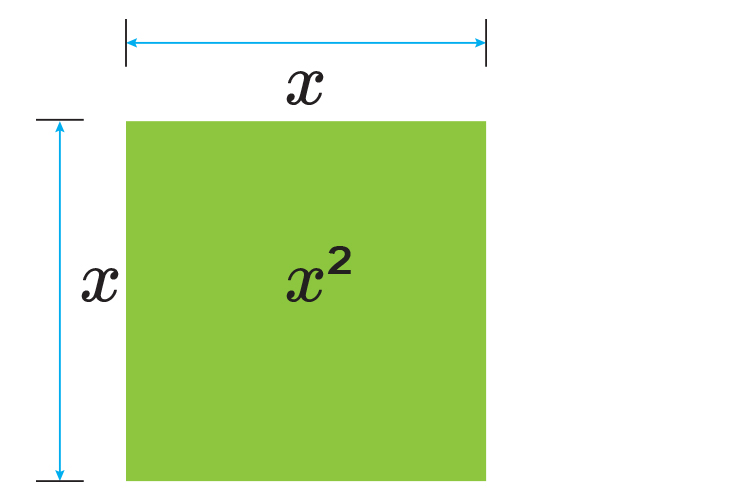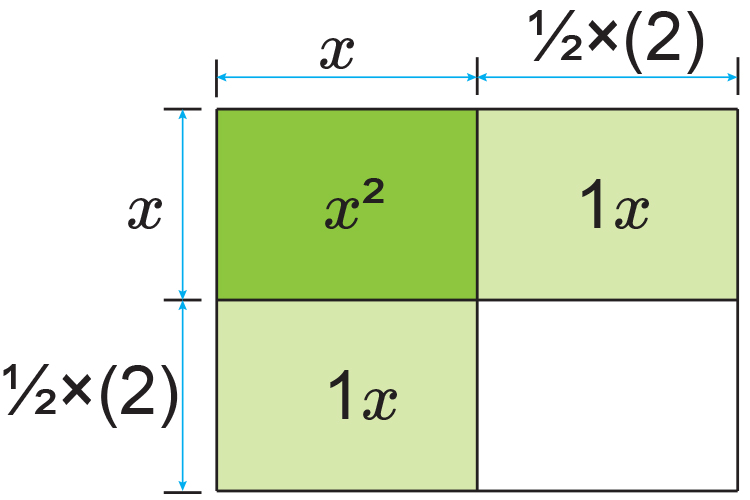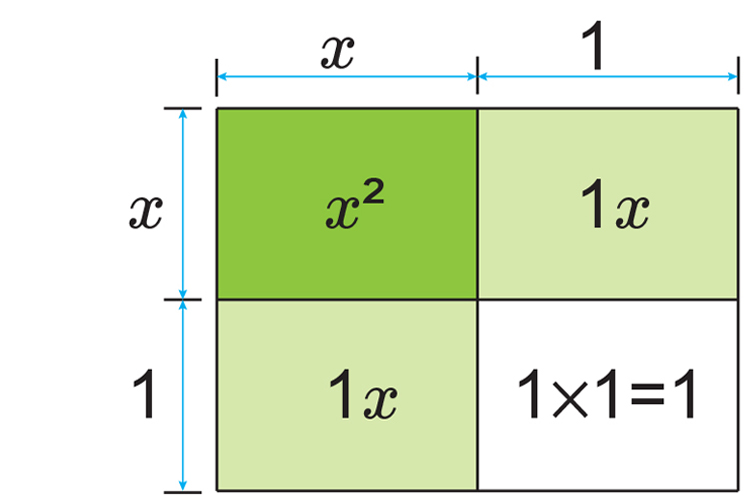Completing the square – getting rid of the square (difficult)
When it isn’t obvious how to get rid of the square
Complete the following square:
---complete-the-square.e24cfc8.jpg)
Remember the above picture
NOTE:
- The coefficient (or number) in front of the `x` must be a 1
- The next square must be ½ of the next term
- Multiply out into all of the boxes
This method uses a visual model to solve a quadratic equation
For example:
`x^2+2x-8=0`
Visually `x^2` can look like an area of a table:

The `2x` can be represented by:

And this will therefore complete the last square as:

NOTE:
This is the same as `(x+1)^2`
At the moment if you add each area together you get:
`x^2+1x+1x+1times1`
`=x^2+2x+1`
Originally we had `x^2+2x-8=0`
We now have `x^2+2x+1=0`
Always plot this on a number line

The number line will help you remember
Original number `-` New number
`-8-1=-9` (we need to `-9` )
So `x^2+2x-8=0`
Is the same as `(x+1)^2-9=0`
Which can now be solved
`(x+1)^2-9=0`
`(x+1)^2=9`
`x+1=+-sqrt9`
(Don't forget the root of anything can be `+` or `-`)
`x+1=+-3`
`x=-1+-3`
`x=-1+3\ \ \ or\ \ \ x=-1-3`
`x=2\ \ \ or\ \ \ x=-4`
Now check
`x^2+2x-8=0`
If `x=2` `2^2+2times2-8=0` Which is correct
If `x=-4` `(-4)^2+2times(-4)-8=0`
`16-8-8=0` Which is correct
(If they don't add up to zero you can be assured that it is wrong)
Answer:
The roots of `x^2+2x-8=0` are `x=2` and `x=-4`




